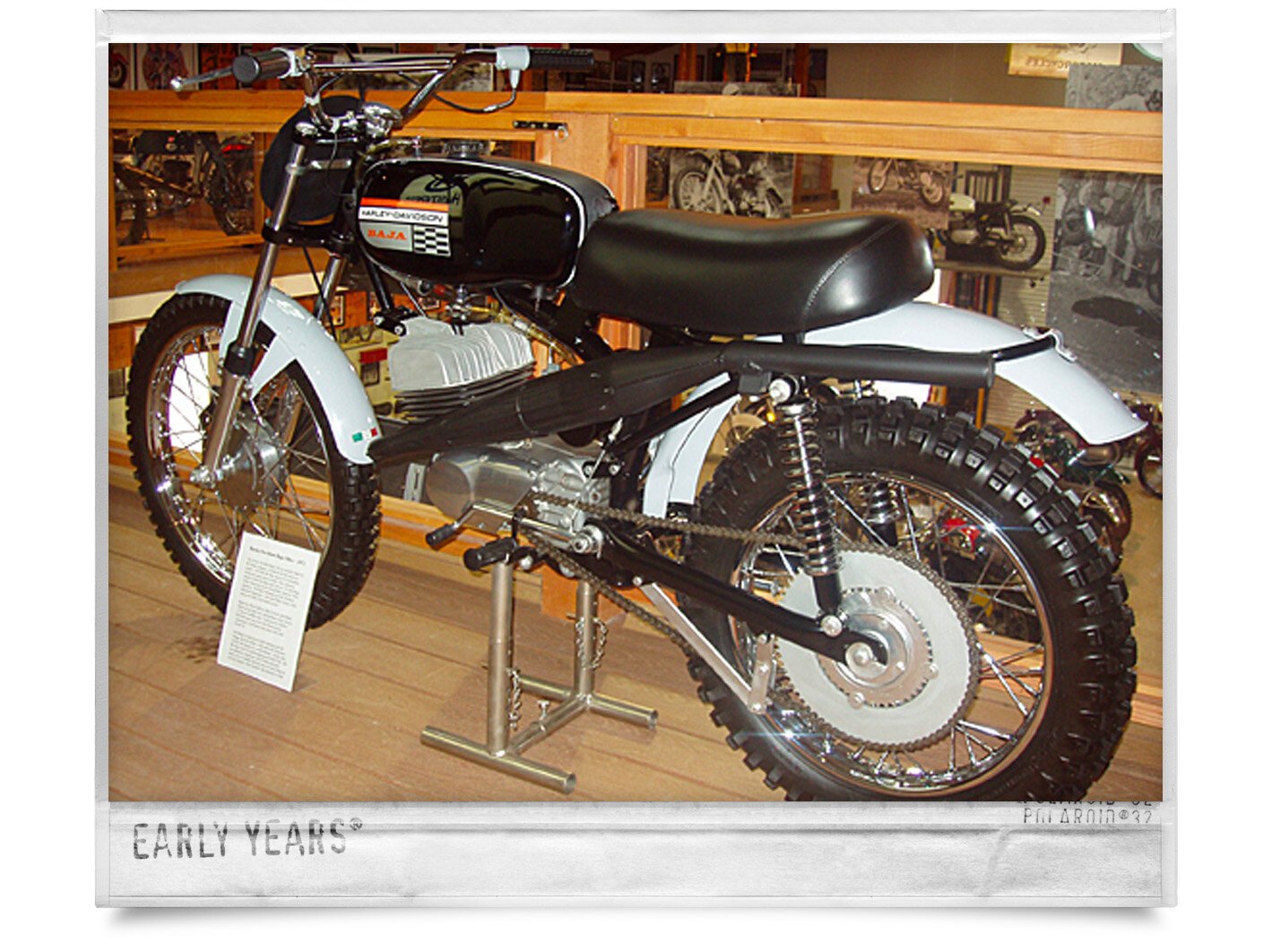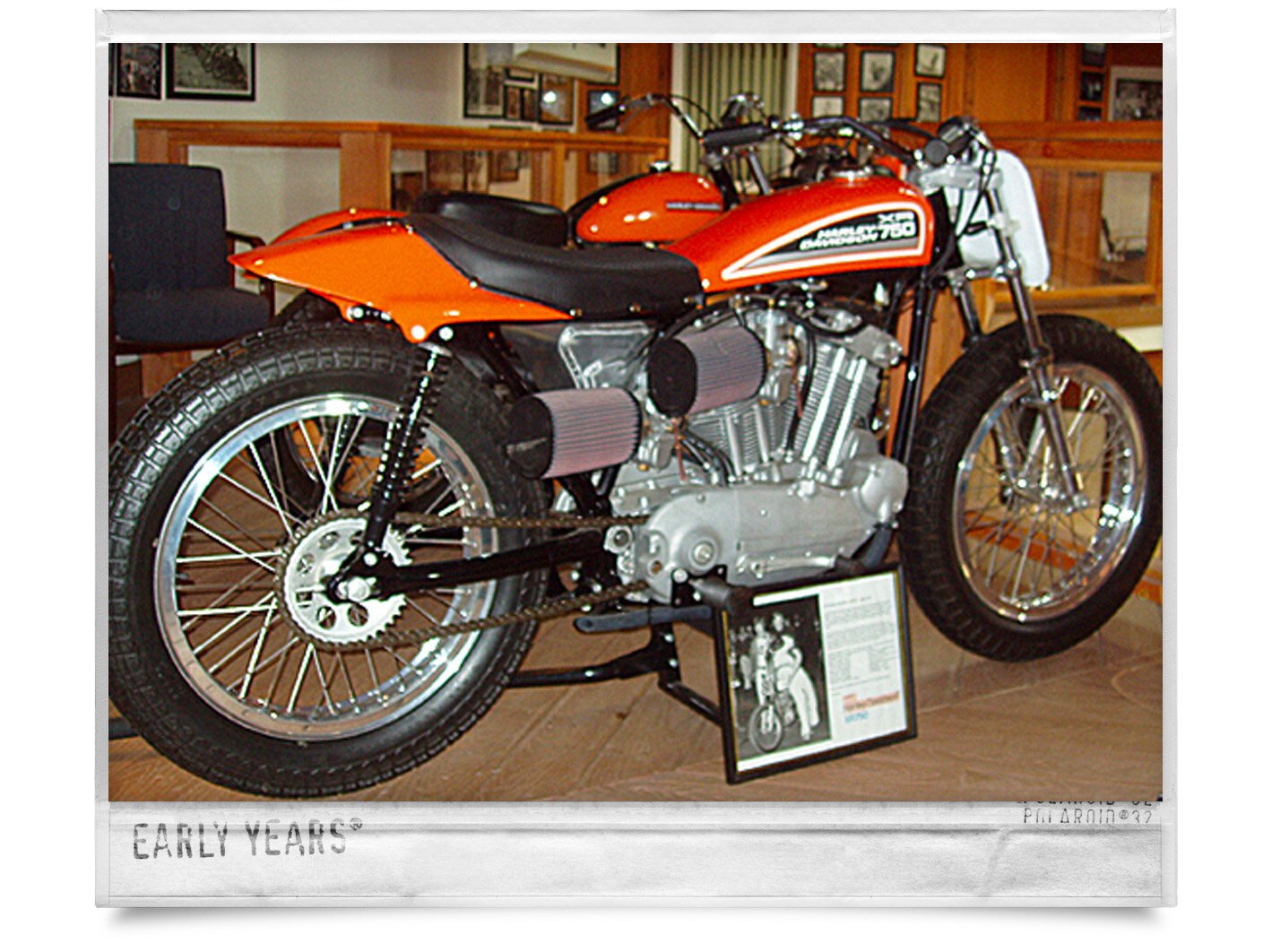Harley-Davidson Baja 100cc (1971)
The Harley Davidson Baja 100 was actually made by the Italian company, Aermacchi for the American market. This little dirt bike was raced in scrambles, motocross, and in desert events. The California desert is where the Baja really shined. For one thing, unlike motocross, desert racing had a class for 100cc machines. The Baja’s abundant ground clearance, and good suspension – they used Baby Ceriani forks, was a real factor in the desert events.
Rider like Bruce Ogilvie, Mitch Payton, and Mitch Mayes all got their starts racing Bajas in the District 37 Desert trailbike class. Unfortunately, Harley Davidson gave up on this fun motorcycle to concentrate on the heavy iron which they were known for.
One thing I’ve discovered since jumping into the vintage dirt bike market, is the enthusiast that have come to the rescue of a certain marque. In this case, the Baja expert is a gentleman named Rudy Pock. He has gathered a warehouse full of bikes and parts, done a lot of research, and has restored many Bajas to factory original. This example was restored by Rudy.
Harley-Davidson MX-250 (1978)
Harley-Davidson’s entrée to the world of motocross was a by-product of one of the most unusual marriages in motorcycle history when they purchased Italian firm, Aermacchi in 1960. This marriage gave them access to a basic 2-stroke engine and the rapidly developing MX market in America.
After some success with its prototype in 1975, the 1978 MX-250 was put into production. Unfortunately, even with riders like Rex Staten, Marty Tripes, and Rich Eirstadt, the results were lackluster. Although the power of the Aermacchi engine was excellent, the weight (249lbs) made it portly, the suspension lagged against the other Japanese and European offerings, and the price ($1695) was $250 to $300 more than the Suzuki RM and Yamaha YZ.
Harley’s relationship with Aermacchi ground to a halt after 1978 because of environmental concerns with 2-strokes and the MX-250 ceased production.
This un-restored example was 1 of approximately 1000 built in the only year of production, 1978.
Harley-Davidson XR750 – “Alloy XR” (1972)
The XR750 that you are looking at was number 009 of 190 examples built by Harley-Davidson in 1972. The “Alloy XR” was the brainchild of race-team manager Dick O’Brian. Frustrated by reliability problems and lackluster power from the “Iron XR,” Mr. OBrian and his staff set about building a production racer that could beat the Triumphs, BSA’s, and Yamaha’s that were winning the majority of Grand National events.
Of the 80 motorcycles I currently own, this is the first complete restoration I have undertaken. It was a blast! My brother Dan (my tuner) and I raced a similar example in the 1973, 74, and 75 seasons. My National Number was 80 and we had pretty good success competing against my hero’s – Kenny Roberts, Gary Scott, Mert Lawwill, Gene Romero, and the other top national dirt-track pros. Over 30 years have gone by, but I instantly became reacquainted to every nut and bolt on the production XR750.
This bike was returned to factory “out of the crate” original. Hope you enjoy this lovingly restored example of dirt-track racing history!
Harley-Davidson CRTT Sprint (1968)
In 1968 TT racing was very popular. TT or tourist trophy as it was called, was a smooth track competition with right and left hand corners, and usually a jump. Harley-Davidson, with the help of their Italian partner, Aermacchi built a 250cc 4-stroke that was well suited to this type of racing. The Sprint model was quite popular from the mid 1960’s until the early 70’s when most riders either rode 2-strokes in TT’s or switched to motocross, which was becoming the sport of choice for many American riders.
The Sprint was available in 250cc and later in a 350cc version, and also in a fully street legal version with lights and other necessary equipment. Harley Sprint street models were considered entry level machines for female or newer riders that didn’t have the experience to handle the big dressers.
This machine came from Bob Tryon who was part of the management team at BSA/Triumph in the early 1970’s.




